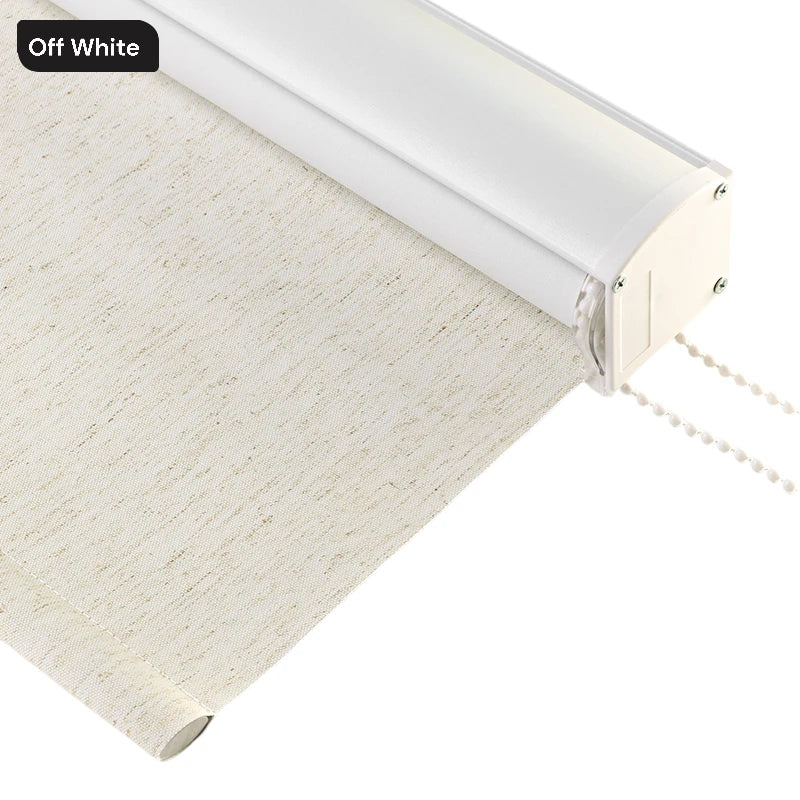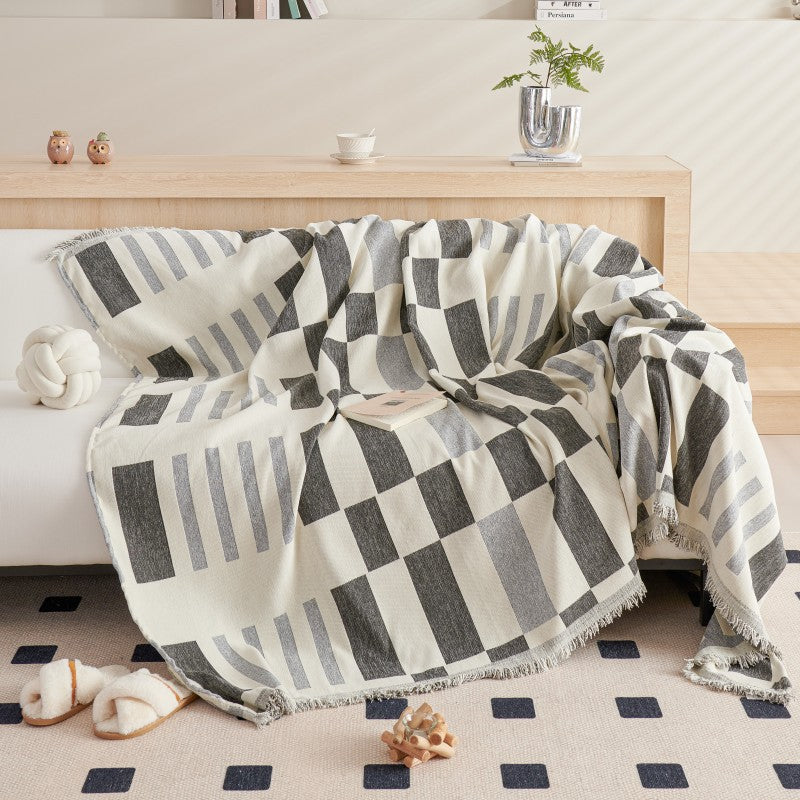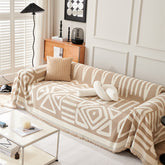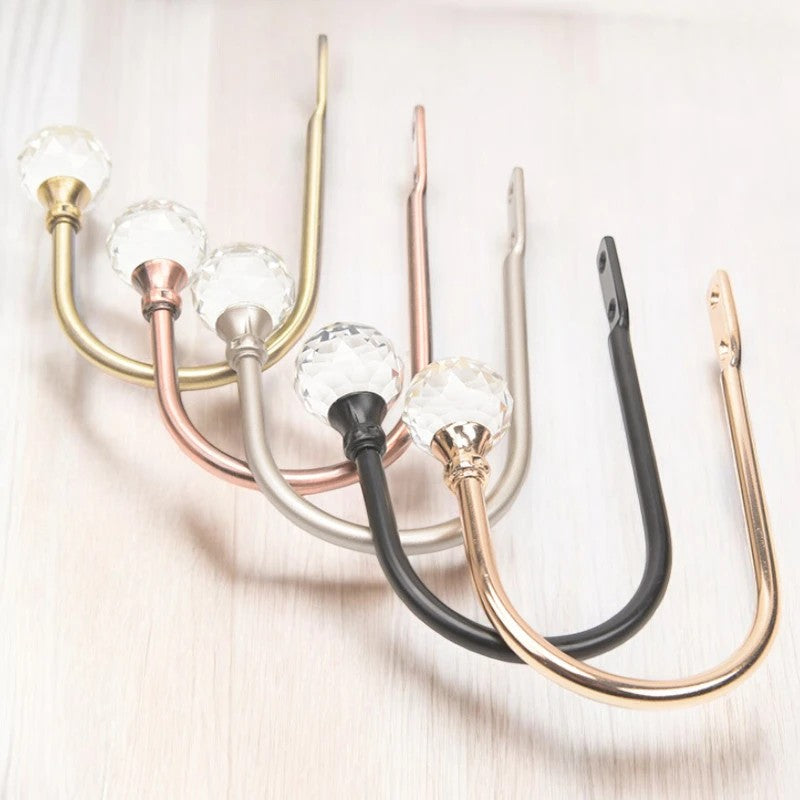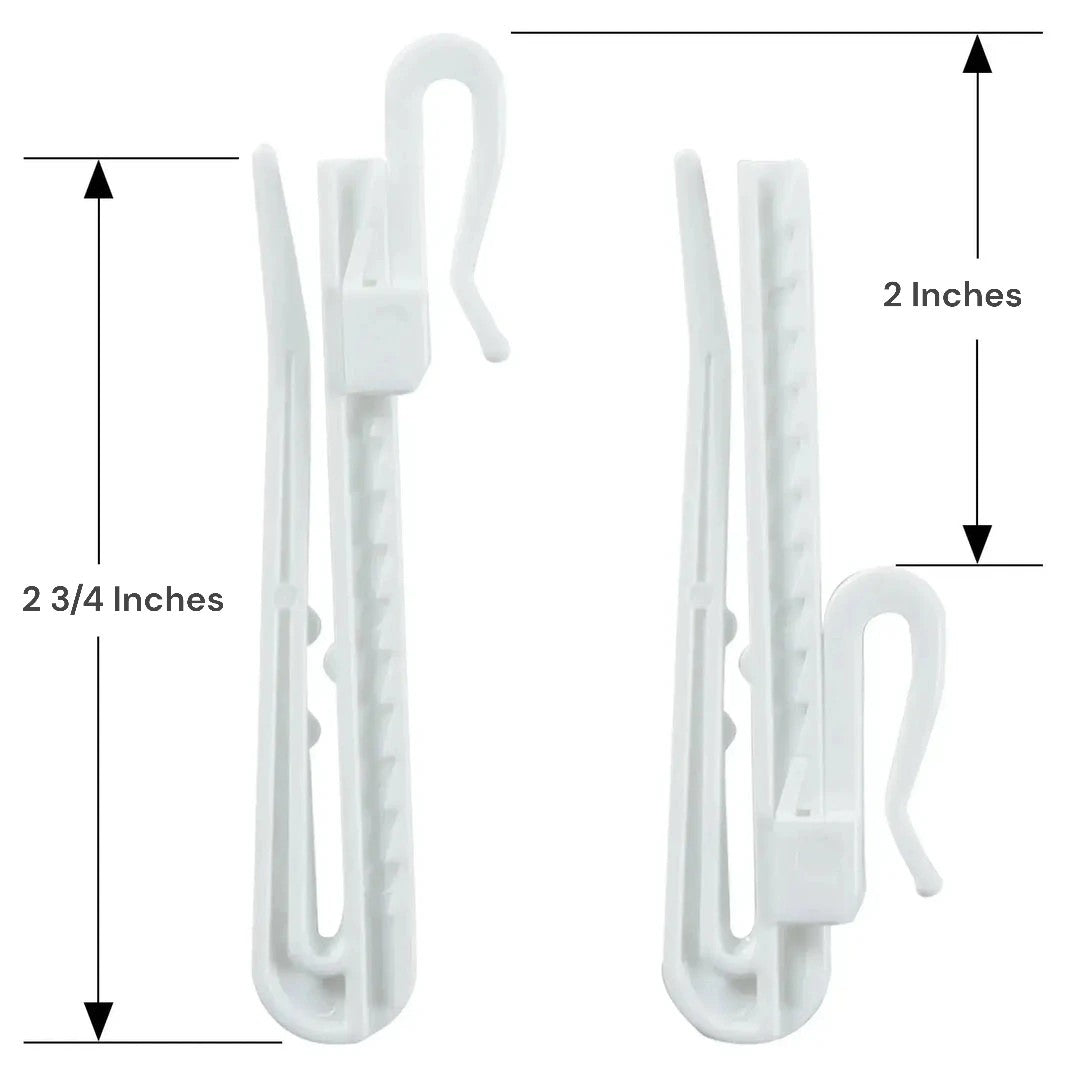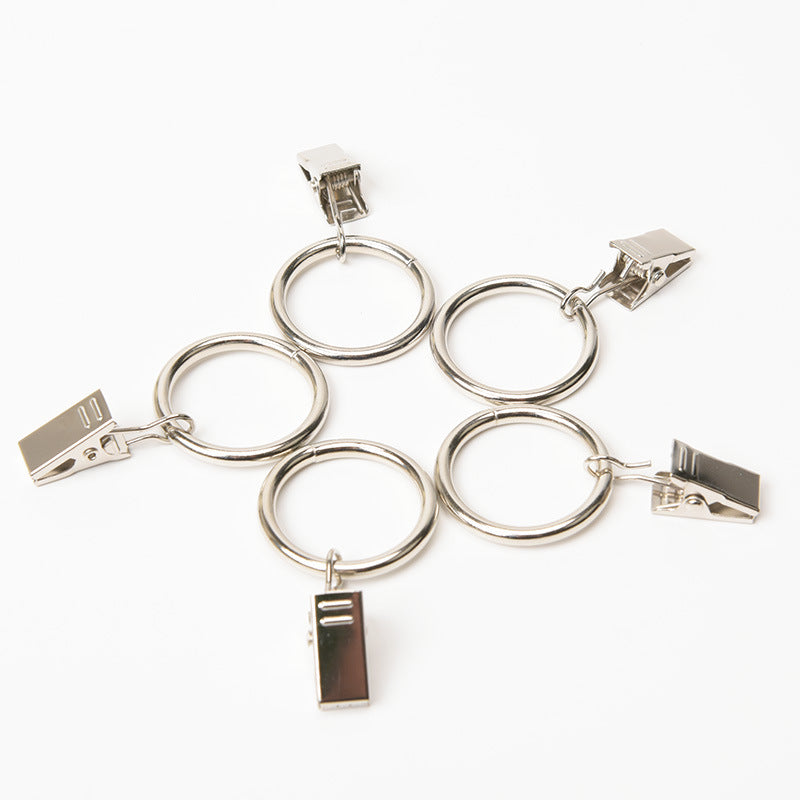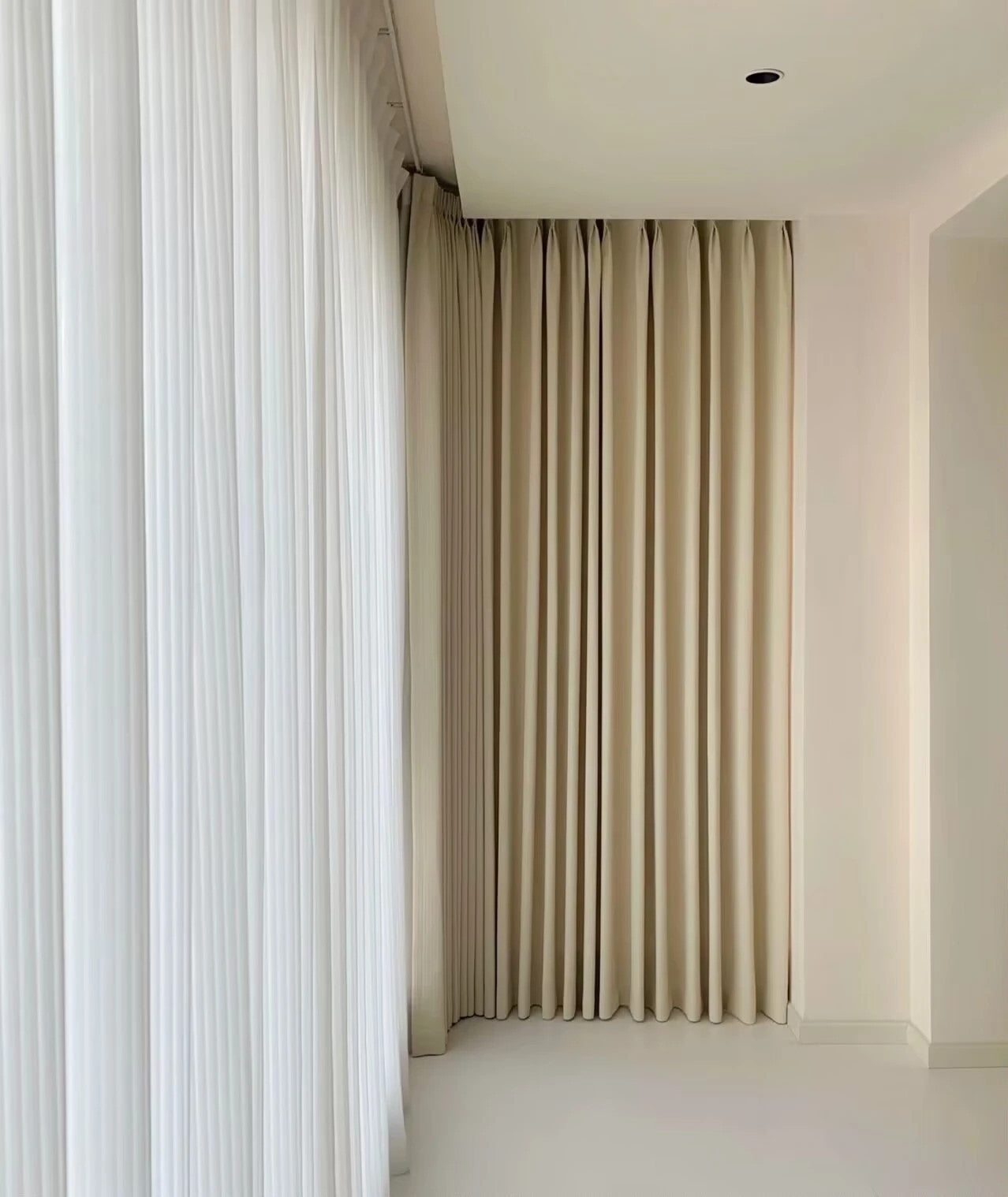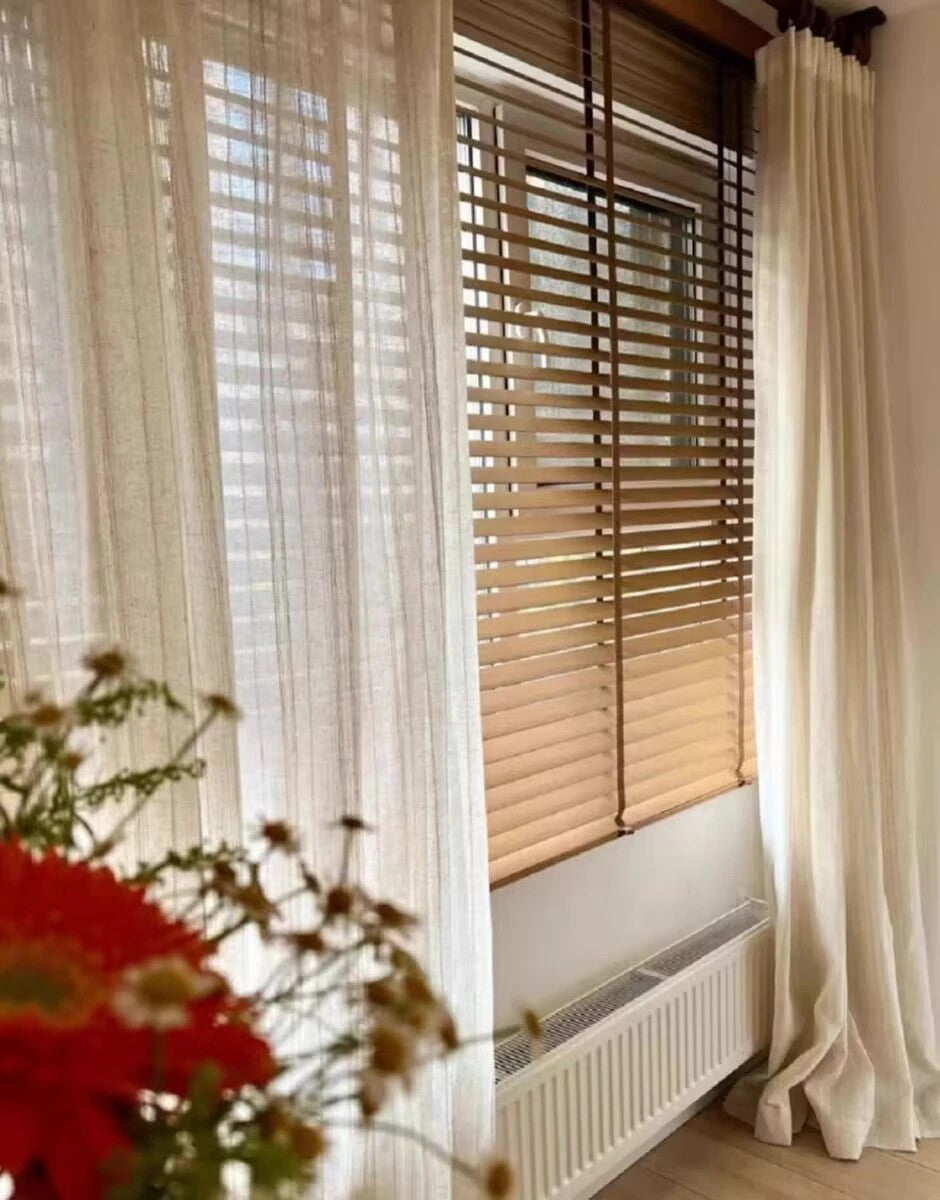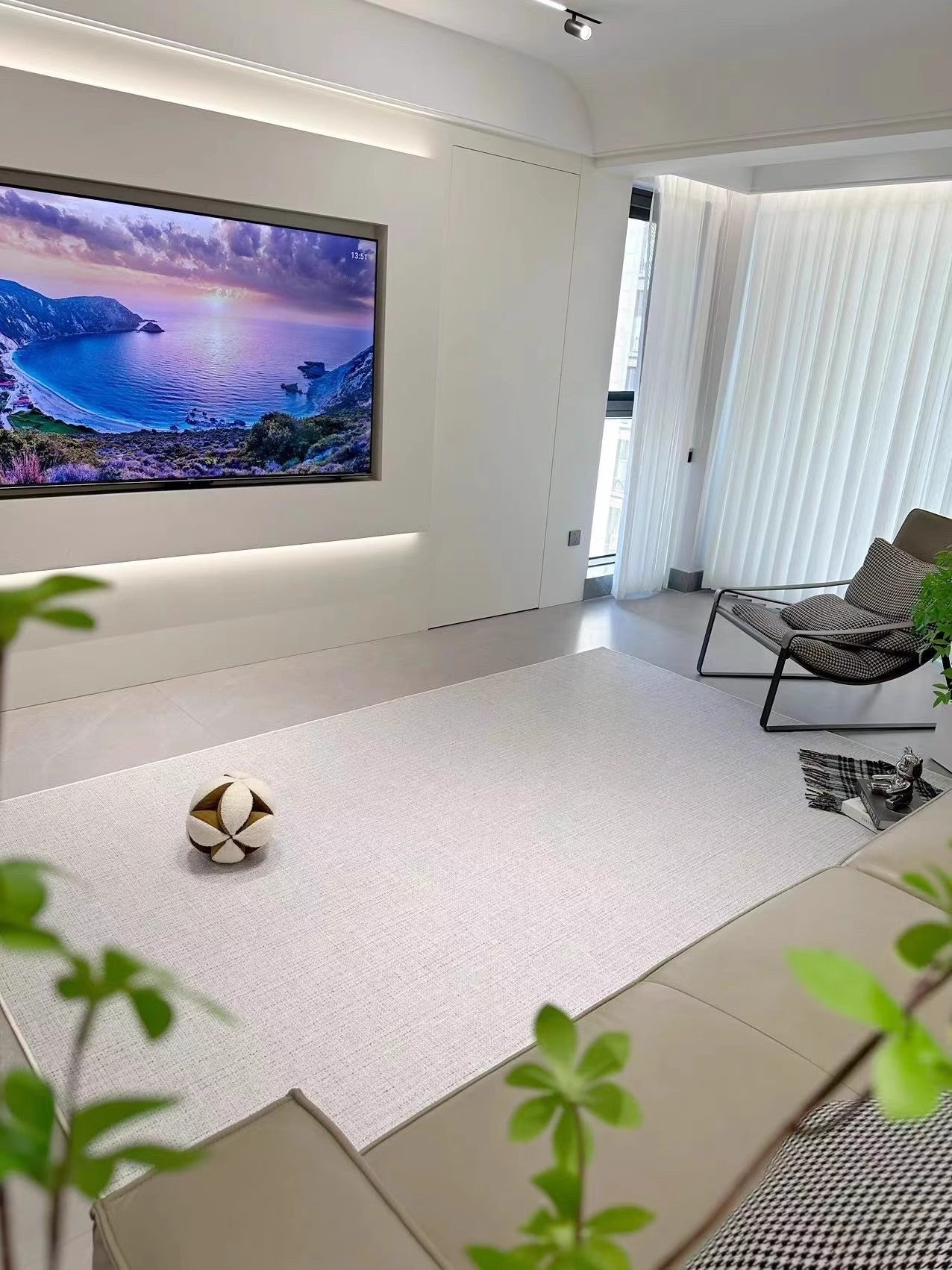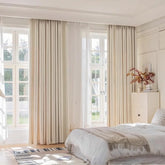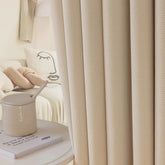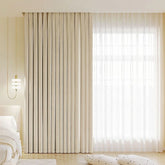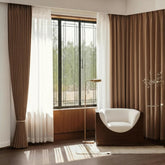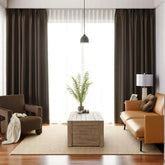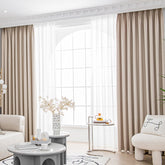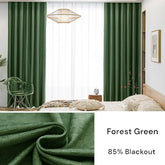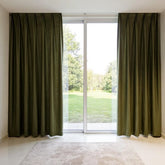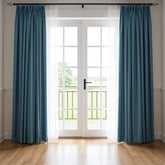Discovering How Wide Curtains Should Be: Tips and Tricks
Choosing the right width for your curtain panels is crucial for achieving the perfect fit and look for your windows. There are several factors to consider when determining the width of your curtains, including the window width, window height, curtain style, and desired fullness.
Starting with the window width, measure the distance from one side of the window frame to the other. This measurement will help ensure that your curtains can fully cover the window when closed. It's important to have enough fabric width to avoid the curtains being too narrow or too wide for the window.
Key Takeaways
- Measure your window width to ensure your curtains can fully cover the window when closed.
- Consider the window height and choose a curtain style that suits your interior design aesthetic.
- Understand curtain fullness and how it can impact the overall look and feel of curtains.
- Use standard widths as a starting point, but consider custom-made curtains for unique or non-standard window sizes.

Measuring Window Width for Curtain Panels
Choosing the right width for your curtain panels is crucial for achieving the perfect fit and look for your windows. There are several factors to consider when determining the width of your curtains, including the window width, window height, curtain style, and desired fullness.
Starting with the window width, measure the distance from one side of the window frame to the other. This measurement will help ensure that your curtains can fully cover the window when closed. It's important to have enough fabric width to avoid the curtains being too narrow or too wide for the window.
Next, consider the window height. Decide whether you want your curtains to hang just below the window sill, to the floor, or even beyond for a dramatic effect. Measure from the top of the window frame to the desired length for the curtains to get an accurate measurement of the window height.
The chosen curtain style will also play a role in determining the width of the curtain panels. Sheer or lightweight fabrics typically require less fabric width, while heavier drapes or pleated curtains may need more width. Choose a curtain style that suits your interior design aesthetic and adjust the width accordingly.
Fullness refers to the amount of fabric used to cover the window when the curtains are fully closed. It can greatly impact the overall look and feel of the curtains. A fuller curtain with more fabric gathers and pleats when closed, creating a luxurious and elegant appearance. On the other hand, a curtain with less fullness will have a more streamlined and minimalist look. Decide on the level of fullness you desire and adjust the width accordingly.

When shopping for curtain panels, you will often come across standard widths. These standard sizes can serve as a starting point in determining the width that will best fit your windows. Standard widths typically range from 36 inches for small windows or decorative valances, up to 120 inches for oversized windows or a more opulent look.
It's important to note that these standard widths may vary slightly depending on the manufacturer. To ensure the perfect fit, always measure your window and compare it to the specific panel width provided by the manufacturer.
While standard widths are readily available, custom-made curtains can be a great option if you have unique or non-standard window sizes. Custom-made curtains can be tailored to your specific measurements and style preferences, ensuring a perfect fit for your windows.
To accurately measure for curtain panels, follow these three steps:
- Measure the window width from one side of the window frame to the other. Take note of the largest measurement obtained, as that will be the width you will use for your curtain panels.
- Determine the fullness ratio. A standard fullness ratio is 2.5 to 3 times the window width. This means that the total width of the curtain panels should be 2.5 to 3 times the width of the window. However, you can adjust this ratio based on your personal preference and the style of curtains you choose.
- Calculate the curtain panel width by dividing the total desired width (determined in step 1) by the fullness ratio. For example, if your window width is 60 inches and you choose a fullness ratio of 2.5, the width of each curtain panel would be 60 inches divided by 2.5, resulting in 24 inches.
Keep in mind that this calculation will give you the width of each individual curtain panel. If you want your curtains to have an overlap in the middle when closed, you may need to add some extra width to account for this overlap.
Here are some additional tips for achieving the perfect fit for your curtains:
- Consider using overlapping panels for a more luxurious and full look. This involves adding extra width to each curtain panel so that when they are closed, they overlap in the middle.
- Curtains should always be at least double the width of the window to achieve proper fullness and a visually pleasing look.
- The length of the curtains is a personal preference. Sill length curtains typically hang just below the window sill, while floor length curtains can either skim the floor for a clean style or puddle on the floor for a rich and elegant look. Short curtains should brush the window sill.
- The type of curtain rod or hardware you choose should complement the fabric and overall style of the room. Heavier drapes work well with large and decorative rods, while light silks and sheers can sit on lightweight and thinner bars.
- Consider the color and pattern of the curtains. Get fabric swatches and compare them to your existing furniture and decor. It's important to select a color that complements the overall color scheme of the room.
- Take the time to shop around and compare options. Check both online and in-person stores, and consider buying from discounters or outlets to save money.
By following these tips and considering all the necessary factors, you can discover the perfect width for your curtains and achieve a visually pleasing and well-proportioned window treatment.

Determining Window Height for Curtains
Next, consider the window height. Decide whether you want your curtains to hang just below the window sill, to the floor, or even beyond for a dramatic effect. Measure from the top of the window frame to the desired length for the curtains to get an accurate measurement of the window height.
The length of curtains is a personal preference, but it's important to ensure that they are the right length for the window. Sill length curtains typically hang just below the window sill, while floor length curtains can either skim the floor for a clean style or puddle on the floor for a rich and elegant look. Short curtains should brush the window sill.
When measuring for curtain length, remember to include any additional height for curtain hardware, such as rings or clips. This will ensure that the curtains hang perfectly without touching the floor or leaving a gap.
Overall, determining the proper width and length for your curtains is essential for achieving the perfect fit and look for your windows. By measuring your window width and height, selecting the right curtain style and fullness, and considering standard sizes or custom-made curtains, you can achieve a visually pleasing and well-proportioned window treatment.
Choosing the Right Curtain Style
The chosen curtain style will also play a role in determining the width of the curtain panels. It's important to choose a style that complements your interior design aesthetic and adjust the width accordingly. For example, sheer or lightweight fabrics typically require less fabric width, while heavier drapes or pleated curtains may need more width to create the desired look.
When choosing a curtain style, keep in mind the level of fullness you desire. A fuller curtain with more fabric gathers and pleats when closed, creating a luxurious and elegant appearance. On the other hand, a curtain with less fullness will have a more streamlined and minimalist look. Adjust the curtain width to achieve the desired fullness for your chosen style.
Consider the curtain rod or hardware you choose as well. Heavier drapes work well with large and decorative rods, while light silks and sheers can sit on lightweight and thinner bars. The color and pattern of the curtains should also be considered. Select a color that complements the overall color scheme of the room and get fabric swatches to compare to your existing furniture and decor.
By understanding how the chosen curtain style affects the width of the curtain panels, you can select the appropriate width to achieve the desired look and feel for your windows.
Understanding Curtain Fullness
Fullness refers to the amount of fabric used to cover the window when the curtains are fully closed. It can greatly impact the overall look and feel of the curtains. A fuller curtain with more fabric gathers and pleats when closed, creating a luxurious and elegant appearance. On the other hand, a curtain with less fullness will have a more streamlined and minimalist look.
Deciding on the level of fullness you desire is an important step in determining the proper width for your curtain panels. There are recommended curtain width guidelines to achieve different levels of fullness, but you can adjust this ratio based on your personal preference and the style of curtains you choose.
To achieve a standard fullness ratio, you will need to use 2.5 to 3 times the width of your window. This means that the total width of the curtain panels should be 2.5 to 3 times the width of the window. However, you can adjust this ratio based on your personal preference and the style of curtains you choose.
For example, if your window measures 60 inches in width, you will require 150-180 inches of fabric to achieve standard fullness. This width can be divided between two or more curtain panels.
It's important to note that this calculation will give you the width of each individual curtain panel. If you want your curtains to have an overlap in the middle when closed, you may need to add some extra width to account for this overlap.
When choosing your curtain panels, keep in mind that curtains should always be at least double the width of the window to achieve proper fullness and a visually pleasing look.
By considering fullness as an important factor and using the recommended curtain width guidelines, you can achieve a visually pleasing and luxurious look for your window treatments.
Standard Curtain Widths as a Starting Point
When shopping for curtain panels, you will often come across standard widths. These sizes can serve as a starting point in determining the proper width for your curtains. Standard widths typically range from 36 inches for small windows or decorative valances, up to 120 inches for oversized windows or a more opulent look.
However, it's important to note that these standard widths may vary slightly depending on the manufacturer. To ensure the perfect fit, always measure your window and compare it to the specific panel width provided by the manufacturer.
Here's a handy curtain size chart to help you determine the recommended curtain sizes based on the standard window sizes:
| Window Size | Panel Width |
|---|---|
| 36" x 36" | 36" - 54" |
| 36" x 48" | 45" - 72" |
| 48" x 60" | 72" - 96" |
| 60" x 60" | 90" - 120" |
| 60" x 84" | 96" - 144" |
| 72" x 84" | 108" - 144" |
Keep in mind that these are just recommended sizes based on standard window sizes. It's important to measure your own windows and compare them to the panel width provided by the manufacturer to ensure a proper fit.
While standard widths are readily available, custom-made curtains can be a great option if you have unique or non-standard window sizes. Custom-made curtains can be tailored to your specific measurements and style preferences, ensuring a perfect fit for your windows. Dolcewe has custom sizes for curtains starting at $26.99.
Custom-Made Curtains for Unique Window Sizes
While standard widths are readily available, custom-made curtains can be a great option if you have unique or non-standard window sizes. Custom-made curtains can be tailored to your specific measurements and style preferences, ensuring a perfect fit for your windows.
At dolcewe, we offer custom size curtains starting at just $26.99. We have a wide selection of fabrics and styles to choose from, so you can find the perfect match for your home decor. Our team of expert tailors will carefully craft your curtains to your exact measurements, ensuring a perfect fit for your windows.
To order custom-made curtains, simply measure your windows following the steps outlined in this article and provide these measurements to our team when placing your order. We will take care of the rest, delivering beautiful and bespoke curtains right to your door.
At dolcewe, we believe that every home deserves beautiful and high-quality window treatments. That's why we offer custom-made curtains at an affordable price, so you can achieve the perfect fit and look for your windows without breaking the bank.
Order your custom curtains today and discover the difference that perfectly fitted window treatments can make in your home.
Conclusion
By following these tips and considering all the necessary factors, you can discover the perfect width for your curtains and achieve a visually pleasing and well-proportioned window treatment. Choosing the right width for your curtain panels is crucial for achieving the perfect fit and look for your windows. Remember to measure the window width and height accurately, choose a suitable curtain style, determine the level of fullness you desire, and compare your measurements to standard widths provided by the manufacturer.
If you have unique or non-standard window sizes, custom-made curtains could be a great option to ensure a perfect fit. Additionally, consider overlapping panels, proper curtain length, and the type of rod or hardware to use to complement the fabric and overall style of the room. Take the time to shop around and compare options, checking both online and in-person stores, and consider buying from discounters or outlets to save money.
By following these tips, you can create a beautiful and functional window treatment that enhances the overall aesthetic of your home. Don't be afraid to experiment with different styles and designs to find what works best for your space and personal preference. With the right width and design, your curtains can transform your windows and add a touch of elegance and sophistication to any room.
FAQ
Q: How do I measure the width of my window for curtain panels?
A: Measure the distance from one side of the window frame to the other to ensure that your curtains can fully cover the window when closed.
Q: How do I determine the height of my curtains?
A: Decide whether you want your curtains to hang just below the window sill, to the floor, or beyond. Measure from the top of the window frame to the desired length for accurate measurements.
Q: How does the curtain style affect the width of the curtain panels?
A: Sheer or lightweight fabrics require less fabric width, while heavier drapes or pleated curtains may need more width. Choose a curtain style that suits your interior design aesthetic and adjust the width accordingly.
Q: What is curtain fullness and how does it impact the width of the curtains?
A: Fullness refers to the amount of fabric used to cover the window when the curtains are fully closed. A fuller curtain with more fabric gathers and pleats when closed, creating a luxurious and elegant appearance. A curtain with less fullness will have a more streamlined and minimalist look. Decide on the level of fullness you desire and adjust the width accordingly.
Q: Are there standard curtain widths I can use as a starting point?
A: Yes, standard widths range from 36 inches for small windows or decorative valances, up to 120 inches for oversized windows or a more opulent look. Measure your window and compare it to the specific panel width provided by the manufacturer to ensure a perfect fit.
Q: What if I have unique or non-standard window sizes?
A: Custom-made curtains can be a great option. They can be tailored to your specific measurements and style preferences, ensuring a perfect fit for your windows. Explore the availability of custom sizes at dolcewe, starting at $26.99.



